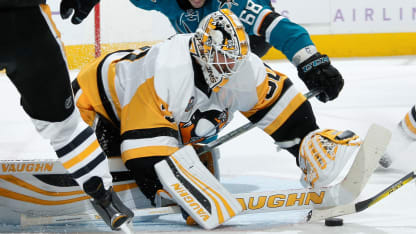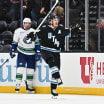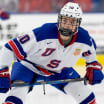When Pittsburgh Penguins goaltender Matt Murray set out this summer to improve upon his Stanley Cup-winning debut, he identified a few scenarios that cost him some goals and made technical tweaks.
Murray worked to solve some post-integration tactics, making sure he wasn't committing too soon to a post seal or getting caught flat along his goal line when he did. But for all the focus on tightening up small details that is now a big part of every NHL goaltender's routine, it's interesting to hear Murray talk about the need to not get caught up in technique, and instead remain somewhat unpredictable as a key to continued success.
Goaltenders must keep shooters guessing
Changing technique essential at NHL level to avoid being predictable

© Don Smith/Getty Images

















